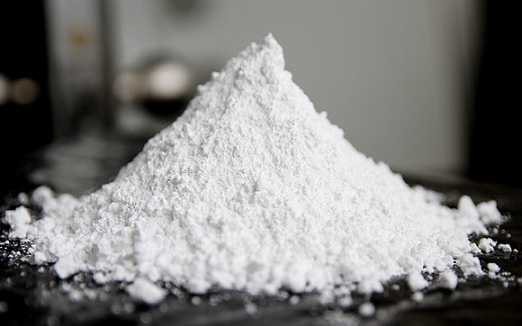
Heavy calcium carbonate is the preferred filler in the plastics industry. It is widely used in plastic films, profiles, pipes, plastic braiding, artificial leather and other plastic industrial production. It can replace expensive white pigments to a certain extent, whitening and improving the quality of products. Surface gloss and surface smoothness, etc.
So, what are the index requirements for heavy calcium carbonate used in the plastics industry? Why are these indicators required?
1. Whiteness
The level of whiteness mainly affects the color and appearance of filled plastic products, but does not affect the mechanical properties and processing properties of the material. The higher the whiteness, the smaller the impact on the coloring of filled plastics; under the same performance conditions, high whiteness has a competitive advantage.
In principle, the whiteness of heavy calcium used in plastics is required to be higher, the better. For example, the whiteness of heavy calcium used in ordinary plastics is required to be greater than 92%, and the whiteness of heavy calcium used in high-end plastic filling masterbatch is required to reach 95%.
2. Impurity content
The level of impurities not only affects the color and appearance of filled plastic products, but also affects the mechanical properties and processing properties of the material.
In principle, heavy calcium used in the plastic industry requires that the lower the impurity content, the better, and the higher the calcium carbonate content, the better. The main impurity indicators that affect plastics are Fe2O3, MgO, SiO2, etc.
3. Particle size and distribution
Particle size and distribution are an important indicator to measure the grade of heavy calcium products, and mainly affect the mechanical properties of the material. Theoretically, the finer the particle size of heavy calcium powder used for plastics, the stronger the product can be greatly improved when filled into plastic, but this is not the case in practical applications. The finer the particle size of heavy calcium powder, the larger the specific surface area and the greater the surface energy. The native The particles are easily agglomerated and added to the resin in the form of multiple aggregates (aggregates), which are unevenly dispersed and difficult to form a stable interface, resulting in reduced product performance.
4. Particle morphology and crystal form
The particle form of heavy calcium has a greater impact on the filling and modification of plastics. For example, fibrous and flaky shapes are beneficial to the mechanical strength of PVC composite materials, but are detrimental to the molding and processing performance; on the contrary, spherical fillers can improve the molding of materials. processing performance, but reduces the mechanical strength of the material.
5. Oil absorption value
In principle, the oil absorption value of heavy calcium for plastics should be as low as possible, because a high oil absorption value will absorb the plasticizer into the filler, causing it to lose the role of plasticizing resin. In order to make the material reach a certain degree of flexibility, it must be increased. The amount of plasticizer used increases costs.
6. Moisture and low molecular substances
Moisture and low-molecular substances are a big no-no for any plastic product, because moisture and low-molecular substances can cause defects and wrinkles on the surface of the product. In severe cases, it can cause honeycombing in the product or cause bridging and breakage during material transportation. It not only affects The mechanical properties of the product also affect the appearance of the product.
The whiteness, impurity content and crystal structure of heavy calcium carbonate products are mainly affected by the grade of raw ore. The particle shape, particle size and distribution are closely related to raw materials, processing equipment, process technology and control level.
